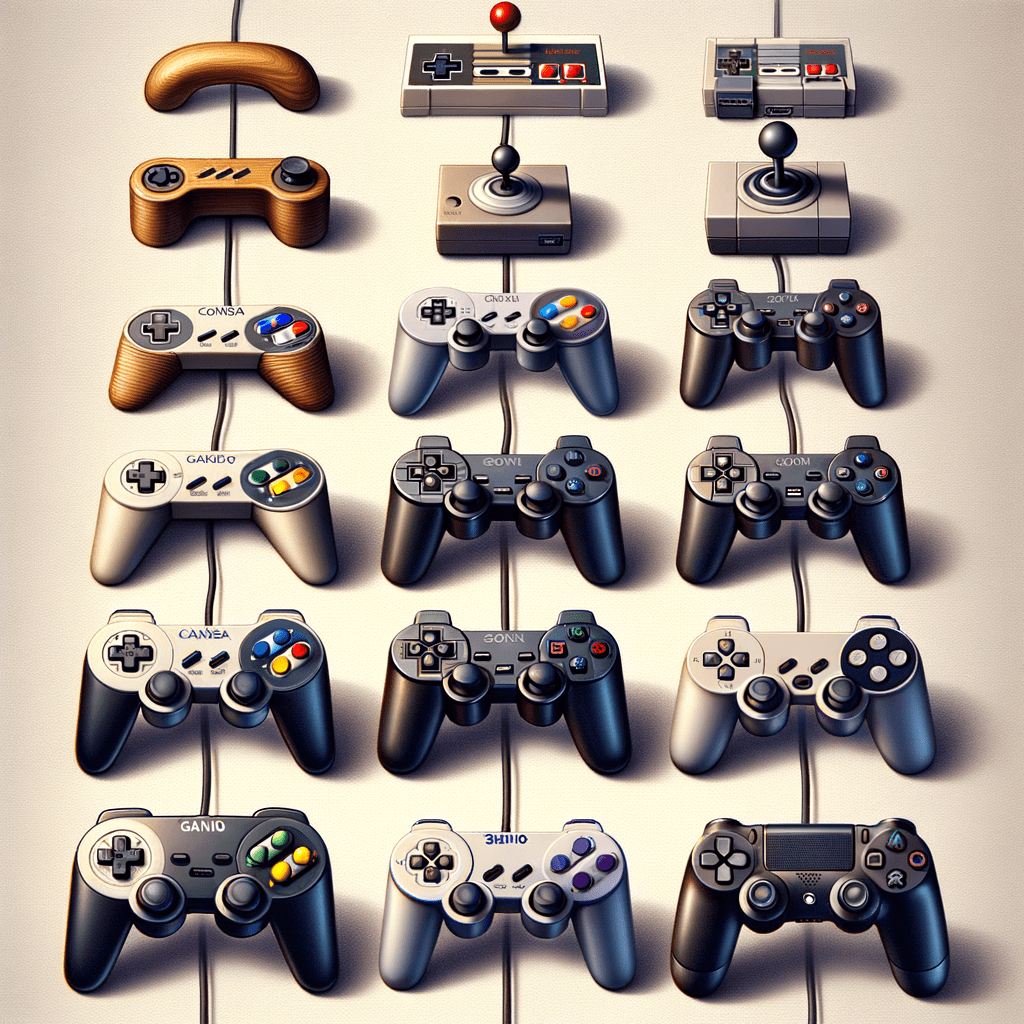When I first got my hands on a video game controller, it felt like I’d been handed the secret key to another universe. Talk about a rollercoaster of emotions! There was this whirlwind of excitement, curiosity, and yeah, a pinch of “Whoa, can I actually use this?” all lumped together in my very first gaming experience. This little gadget, stuffed with all sorts of buttons and sticks, became my magic ticket to endless adventures and challenges. From those early days, video game controllers have morphed into these fancy gadgets alongside the leaps and bounds of the gaming world itself.
And wow, the stories those controllers could tell! They’re like little chronicles of technology, but also of the wild creativity and cleverness of the folks who dream them up. They show how gaming culture danced its dance with these devices, and how us gamers? We learned, adapted, and got a handle on them over time.
The Early Days: Simplicity and Experimentation
Ah, the good ol’ days of gaming were simple times. The joystick ruled the roost back then. Picture it: a humble stick with a button or two that lived on countless arcade cabinets. As a kid, oh boy, I remember gripping that thing tightly in the arcade, feeling this crazy connection as I steered my ship or character around.
That joystick made its way into our homes too, thanks to consoles like the Atari 2600. This thing was a rectangle with a red button and pretty much my personal invite to the digital world. It wasn’t much in the way of comfort compared to today’s sleek designs, but back then, who even said “ergonomics”? Nope, we just wanted something that did the job—and it sure did, even if my hand sometimes felt like a pretzel after a long session.
Then boom, in came the experimentation era. Every new console had its own thoughts about what a controller should be. The Intellivision’s numeric keypad? Haha, that thing felt like it belonged on a phone, not a gaming console. Seriously, that quirky design is still talked about in gaming lore as a nod to those heady days of wild ideas.
The Gamepad Era Begins
And then, we started getting a taste for more complex controls. The gamepad era was on! The Nintendo Entertainment System (NES) really shook things up with its revolutionary little rectangle. Directional pad, select and start buttons, two action buttons—it became a template. Man, I’ll never forget the satisfying click of those buttons after beating a tough level in Super Mario Bros.
This design influenced pretty much everything in the industry. The Super Nintendo beefed it up with more buttons and shoulder bumpers. It was so neat seeing games adapt to these new possibilities.
Then there was Sega and its Genesis controller. It brought in some different ergonomic shapes and what became the “three finger” grip. I remember the passionate debates with my friends about which console had the “best” controller. It seemed like those chit-chats had their own heartbeat and could go on forever without a clear winner.
Into the Third Dimension
The mid-90s brought a game-changer: 3D gaming. Consoles like the Sony PlayStation and Nintendo 64 upped the ante, and controllers had to be up to the task. I was totally baffled by the Nintendo 64 controller when I first saw it. It had this wild three-pronged design that seemed to invite a whole new way of playing—just perfect for exploring digital worlds.
That analog stick in the middle was something though—allowed this fine-tuned control in a 3D space and had game designers’ imaginations running wild. Games like Super Mario 64 changed the way we moved in digital worlds. I might’ve been a bit thrown off by that middle prong at first, but it made perfect sense when weaving through Hyrule as Link.
Sony stepped up too with its DualShock controllers, bringing in dual analog sticks and the unforgettable “rumble” feature. I can’t quite put words to the thrill the first time my controller vibrated—like it finally connected the dots between game and reality, pulling me deeper into the world on-screen. It was the start of truly interactive experiences.
Ergonomics and Evolution
As the 2000s rolled in, controllers started prioritizing comfort and precision. Xbox, debuting in 2001, brought out a sizeable controller that didn’t fit everyone’s fancy—especially those with smaller hands. But the precision? Rock solid! Soon after, the Xbox Controller S emerged, sleeker and a dream to hold.
Sony kept refining its DualShock design, balancing familiarity with innovation, striking a chord worldwide—including with me.
Nintendo, true to itself, decided to shake things up with the GameCube controller. It didn’t follow the usual rules and had buttons of all shapes, sizes, and textures. Though I was overwhelmed at first, holding it just felt right, especially when getting sucked into hours of Super Smash Bros.
Breaking the Mold with Motion Controls
Then, Nintendo’s Wii in 2006? It tossed convention right out the window with its motion-sensing Wii Remote—no joypads here! I met this with a mix of skepticism and curiosity. Could a remote deliver a full-fledged gaming experience?
Turns out, the Wii took the world by storm, drawing in families, casual gamers, and hardcore players with its interactive games like Wii Sports. So many fun evenings spent pretending to play tennis or nail a perfect bowling session—all thanks to this remote wielding its magic for immersive gameplay.
The Present and Future
Fast forward to today, and we’re standing on the brink of virtual reality and cloud gaming. Controllers like the PlayStation DualSense, with its haptic feedback and adaptive triggers, and the Xbox Series controllers, refining an already amazing design—these set a fresh standard in tactile feedback.
Controllers today are more inclusive, too, with adaptations for every gamer, recognizing that games are for everyone. Microsoft’s Xbox Adaptive Controller with its customization options serves as a shining beacon of this ethos.
So as we tiptoe into the future, it’s thrilling to ponder where controllers will fly next. VR headsets? Haptic suits? The horizon’s wide open, and I’m eager to see what awaits.
Looking back at the evolution of video game controllers is a delightful journey through a saga of creativity, adaptability, and our relentless desire to make those virtual moments as real and mesmerizing as possible. Each controller I’ve ever gripped has not only marked its place in gaming history but has also been a stepping stone in my own gaming adventure. They familiarized my hands with the language of digital lands, ushering in fun, frustration, triumphs, and the camaraderie of shared experiences. They take me back to that grinning kid in the arcade, fingers trembling on the trusty joystick, ready to embark on the next great adventure.
The journey continues, controllers at the ready, as we all eagerly anticipating the next chapter of gaming innovation.















